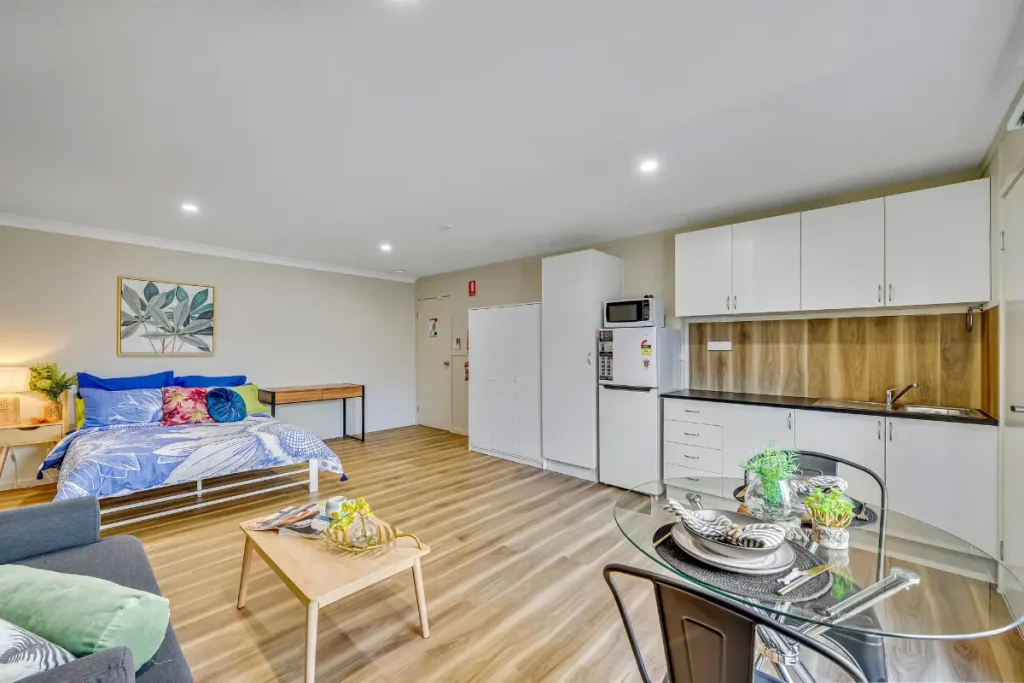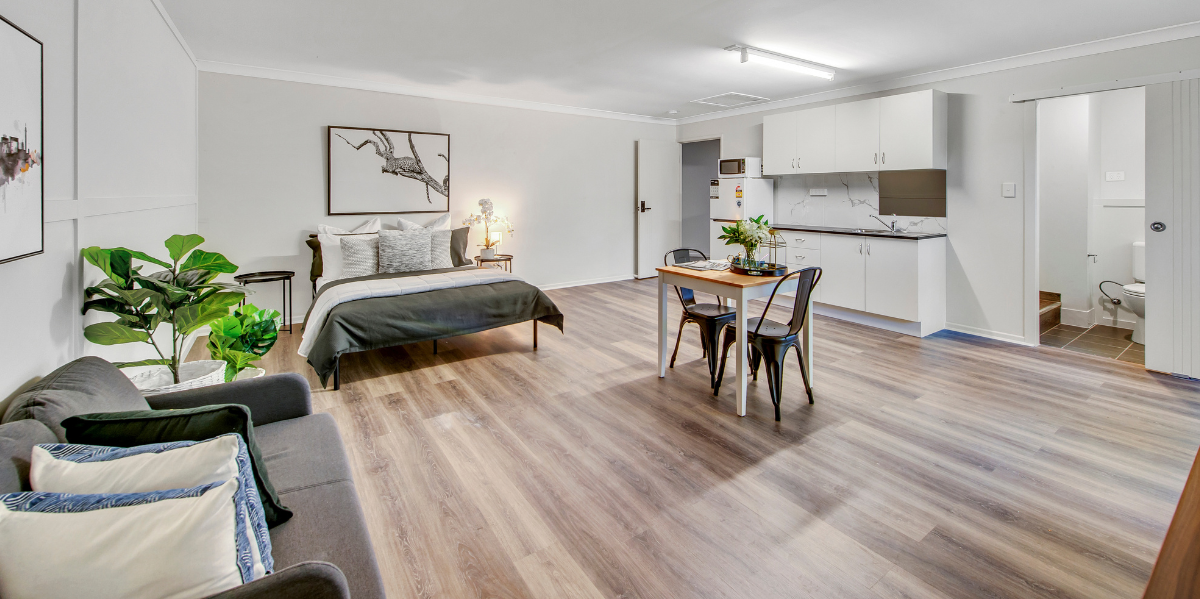Over the generations, Australians have become deeply attached to the idea that a property investment journey starts with purchasing your own home.
When you rentvest – controversially – you can kick off your property portfolio with an investment you never want to live in. And in the meantime, rent where you like. That’s the discussion I had with Tim Hart from Active Property Group when we got together with Adrian Franklin to do Ticker HOME. And as we agreed, going the rentvest-first route can net you much higher rates of return.
Leaving your heart out of it
Many of us are willing to move heaven and earth to buy our own home, even when it’s a bad investment. Even knowing that we could be making a higher percentage return on that money somewhere else, and still have the lifestyle we desire.
Tim’s philosophy addresses that mental glitch. He says: “Rent for love, buy for returns.”
The good thing about your first purchase being an investment rather than a home is that the emotion – the love for the property – is taken out of it. Or should be. It becomes a business decision, where you’re ticking off criteria, and basing it on the numbers.
As Tim told us, he rents a beautiful big house in a really nice area of Victoria. If he’d had invested money in the property he lives in, it would have been $2.5 million.
What could Tim have done with that money? He could have got between 6% and 12% return, while the owner of his rental is getting 3% to 4% return.

Rentvesting is catching on
More and more people are considering the rentvesting strategy now in their property portfolio, for all kinds of reasons.
First and foremost, it can give you a leg-up on the property ladder. For millennials and Gen Zs, it allows you to break the cycle of being ‘forever renters’ without having to ask for money from your family or have them go guarantor.
As Tim says, it allows you to pick where you want to invest on the basis of the returns – whether you’re contemplating residential property, commercial or industrial. Rather than putting pressure on yourself to invest in certain areas because that’s where you want to live. Which can be especially hard if those areas are feeling unaffordable to you right now.
And you can rentvest in a number of different ways. There are people buying, say, an investment property and a motor home, like millennial couple Joel and Bianca, who featured in an
Some rentvesters will buy one initial investment property and then buy a place to live when they’re ready. Others will rentvest for the long haul, accumulating a number of investments in their property portfolio while continuing to rent.
SCROLL DOWN to find out how rentvesting can help you build your property cash flow without even buying a property!


You don’t even need to buy property
Tim made an interesting point – you can rentvest and not even buy property. Instead, it might be shares, cryptocurrency – whatever makes sense for you. That allows you to diversify, instead of putting all your eggs in one basket (like a $200,000 deposit for one house).
It also gives you flexibility, and greater freedom for your lifestyle. If horrible new neighbours move in next door, as a renter you can give notice and move. If you’ve bought, you might feel you need to put up with the neighbours for capital growth; or you might have to sell, and pay a real estate agent’s commission, and then pay stamp duty again for your next place.
A word of caution: Rentvesting doesn’t mean just leaping on the first likely option. You still need to do your research on areas and properties of interest. Make sure you get expert advice, or find a mentor who’s been there, done that.
And make sure you apply the same diligence when you’re planning to rentvest, as if you were saving for your home. No digging into your funds to splash out on new cars or holidays. Keep building your nest egg.
Another spin on rentvesting: commercial property
In Tim’s business, he specializes in buying bigger properties in the $3M to $20 million price bracket where there is far less competition. “We’ll go and buy a shopping centre, and then we make it available to multiple investors in a Pooled Mortgage Fund,” he says. They invite 20 to 30 investors who come in and own a small share of a bigger asset.
“We go for bigger assets and multiple tenants, rather than having all your eggs in one basket,” Tim says.
The first commercial property Tim ever bought was a strip of eight shops in Shepparton in Victoria. He bought it for $4 million in 2015 and achieved a return of about $390,000. That’s a $240,000 positive cash flow after paying all his costs: a 13% yield. And the cash is rolled into a trust for the benefit of all the investors.


Have I rentvested as part of my property portfolio?
I haven’t pursued a rentvest strategy myself. And the reason is, I’m a builder and a tradie, and I couldn’t sit in a rented house and look at the walls around me knowing I can’t touch them. I’d be sitting there and redesigning in my head and saying, ‘I need to move that wall and open that one up.’
That said, every property deal I do, even my principal place of residence, is treated as a business deal, because I want to make sure I manufacture growth. I might go for a sub-dividable block for instance. We’ve talked about that before in Ticker HOME and in this blog.
Even Tim, who’s a huge advocate of rentvesting, recognises it’s not for everyone. While the numbers can be better, for many people, you can’t put a number on what it feels like to own your own home, or to know that you can renovate it. For those people, it will never make sense to rentvest, compared to the value of never having to move again. Or knowing that you don’t have to rent for the rest of your life. No one knows what that’s worth to you, and that’s different for every single person.
But for a lot of investors, under the right circumstances rentvesting works out to be a lot more profitable than buying a principal place of residence first. It just requires a new mindset.
Find out how my HI-RES students have used the RENTVESTING strategy to build their property portfolios HERE.




